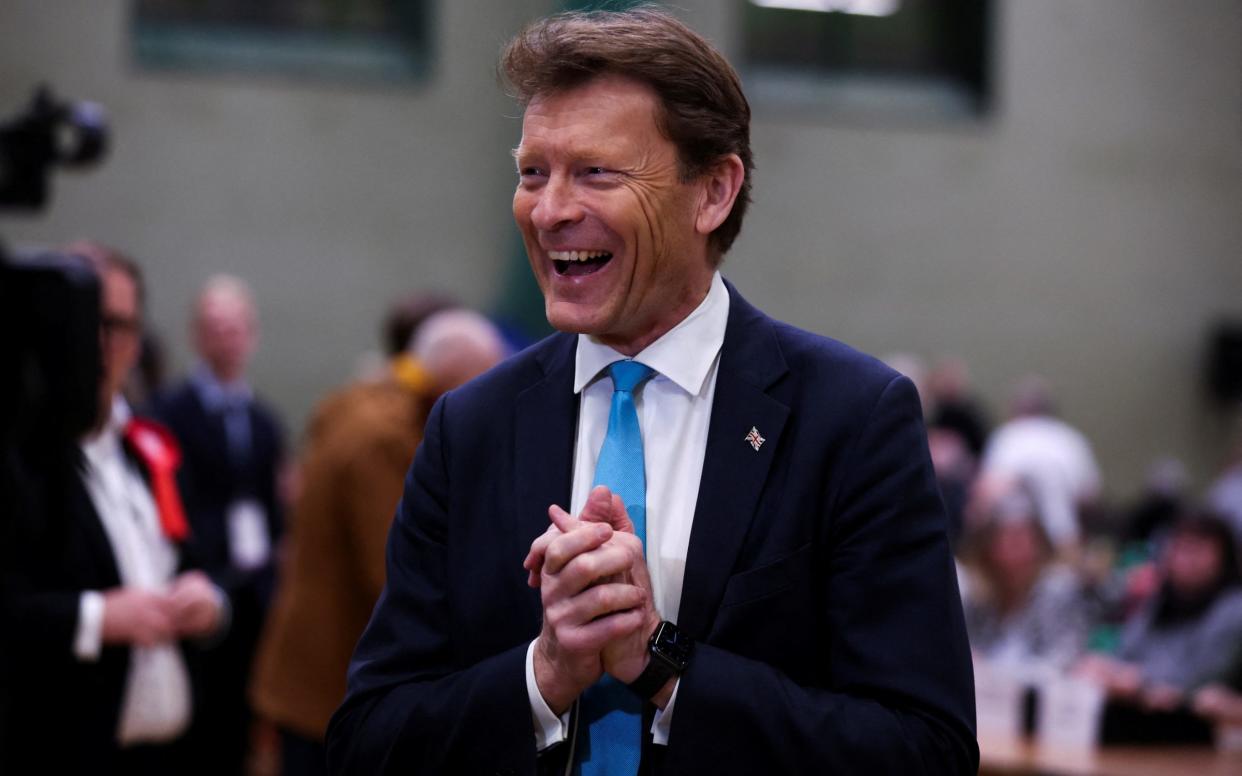Reform ‘could hand Labour general election majority’

The rise of Reform UK could hand Labour a majority at the next general election, Professor Sir John Curtice has suggested as he dismissed the prospect of a hung Parliament.
Sir John, Britain’s foremost polling expert made the prediction after Colin Rallings and Michael Thrasher, of Nuffield College at Oxford University, said that Thursday’s local election results suggested Labour would have a seven-point lead over the Conservatives nationally, meaning the party would fall short of an overall majority.
The projection differs significantly from Labour’s average poll lead of around 20 points, which would result in a convincing majority for Sir Keir Starmer.
Its findings were seized on by Rishi Sunak, who said on Sunday: “These results suggest we are heading for a hung Parliament, with Labour as the largest party.”
But Sir John said the analysis by Prof Rallings and Prof Thrasher failed to take into account that Reform only stood candidates in one in six wards.
He told BBC Radio 4’s Today programme: “We should be wary of these projections … We know from the opinion polls that Reform is now taking more votes off the Conservatives than Labour is. Reform only appeared in one in six of the wards, so therefore their impact was probably diminished.
“Certainly, what you discover if you take the wards where Reform did stand, and look at what happened to the Conservative vote in those, the answer was the Conservative vote was down by 19 points.
“In other words, once you’re looking at places where Reform were on the ballot paper, and as they threaten to be in the parliamentary election, the change in the parties looks remarkably like what you might expect.”
Sir John argued that voting behaviour in local elections often differed from general elections, pointing to the Liberal Democrats and the Green Party regularly outperforming their national performances at council level.
He also noted that while the current polling picture in Scotland “wouldn’t make enough of a difference on its own” to help Labour win a parliamentary majority of 326 seats, the Rallings and Thrasher analysis failed to consider the collapse in support for the Scottish National Party.
Sir John said his own analysis showed a nine-point Labour lead and he could have also mapped the local election results to create a national picture, but added: “We frankly decided not to do it, partly because we feel that maybe it wasn’t necessarily the most reliable piece of information.”
Maria Caulfield, a junior health minister, on Monday said the hung Parliament projection meant there was “every chance” that the Conservatives could win the next general election.
Analysis by The Telegraph has suggested Reform could be on course to cost the Conservatives dozens of seats at the next general election and Richard Tice, the Reform leader, has said he was “delighted” to have harmed Tory fortunes where his party did stand last week.


